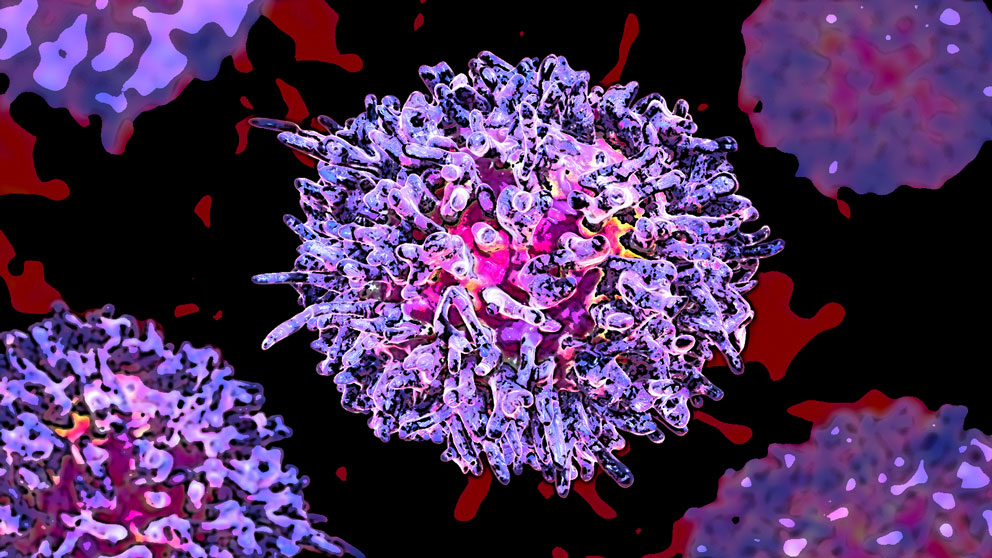
Blocking glycolysis and specific RAD51 function targets cancer with minimal side effects
A new approach to treating some leukemias could deliver a one-two punch to the cancer cells without harming normal tissue.
Like all cells, cancer cells need fuel to survive, grow and reproduce. A process called glycolysis converts glucose into pyruvate, releasing energy that forms ATP and NADH molecules, which act as the cells’ energy source.
“Targeting the early steps of the glycolysis pathway in cancers is a well-established therapeutic strategy,” explains Jackson Laboratory (JAX) Research Scientist Muneer Hasham, Ph.D.Wide array of research interests includes infectious diseases, immune disorders and cancer pathogenesis. Muneer Hasham, Ph.D. “However, the doses required to elicit a therapeutic effect on the cancer can be toxic to the patient.”
And though numerous preclinical and clinical studies have combined glycolytic blockade with other therapies, he says, “most of these other therapies do not specifically target cancer cells, and thus adversely affect normal tissue.”
Hasham had a breakthrough idea for a new combination therapy based on two colleagues’ work.
JAX Professor Derry Roopenian, Ph.D.Conducts research to understand why the immune system causes autoimmune diseases and to devise methods to predict and treat them.Derry Roopenian, Ph.D ., recently demonstrated the tumor-reducing power of a specific glycolytic blockade, 2-deoxy-D-Glucose (2DG). And in earlier work conducted at JAX, Kevin Mills, Ph.D., now chief scientific officer of Cyteir Therapeutics, Inc., identified a molecule, 4,4ʹ-Diisothiocyano-2,2ʹ-stilbenedisulfonic acid (DIDS), that prevents repair of some cancer cells, providing a potential new "genetic chemotherapy" approach to cancer treatment. In mouse studies, the DIDS treatment also showed significantly reduced side effects and treatment resistance compared with traditional chemotherapy.
Working with patient-derived xenograft (PDX) mouse models that can host human tumors, the Hasham group showed that a variety of tumor samples were effectively targeted by 2DG. Next, they showed that DIDS effectively targeted a cell line of chronic lymphocytic leukemia (CLL) with a specific characteristic (expressing activation-induced cytidine deaminase, or AID).
The researchers then combined 2DG and DIDS, each at a lower dose, to treat mice carrying AID-positive CLL cells, and demonstrated that this combination is more efficacious than fludarabine, the current standard-of-care treatment for CLL. Moreover, the treatments showed minimal adverse effects on the mice.
Hasham is the senior author of a paper publishing these results in Cancer Biology & Therapy, a journal of the Taylor & Francis group. He is the JAX interim PDX study director.
“The worst thing about chemotherapy is the adverse effects,” says Hasham. “You want to treat the patient, not hurt the person. With this combination, you use lower doses of two drugs, and you get a better effect than what’s in the clinic now.”
Wilson et al.: Enhancing the efficacy of glycolic blockade in cancer cells via RAD51 inhibition. Cancer Biology & Therapy, Sept. 5, 2018, https://doi.org/10.1080/15384047.2018.1507666.